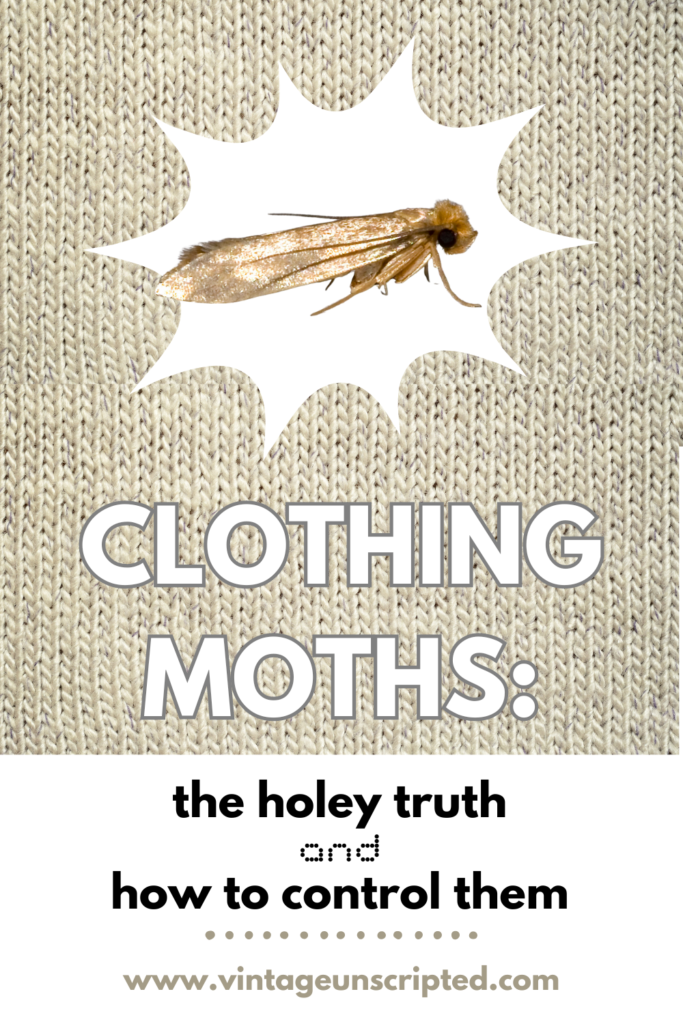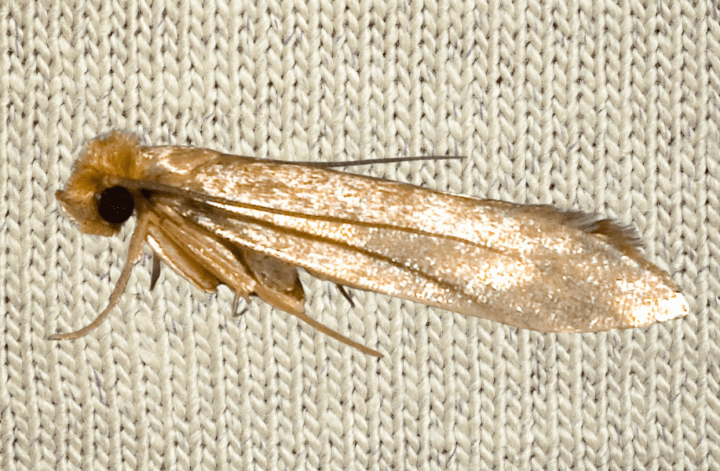Right around Halloween, summer wear is packed away and our fall and winter woolies are brought out. Occasionally, that task turns into a scene from a horror movie if your sweaters and tartans have been invaded by clothing moths.
Clothing moths are small determined insects with an appetite for more than just wool. There are two varieties; the webbing clothes moth and the casemaking clothes moth. Both will eat almost any fiber that comes from an animal including leather, fur, felt, angora, cashmere and silk. And they don’t just eat clothing—they’re equally happy chomping up carpets, upholstered furniture, blankets, yarn and taxidermy.
Clothing moths should not be confused with pantry moths, which you might find in a bag of birdseed or other grain that has hung around your kitchen too long. Pantry moths are after food, clothing moths sneer at grains. And the moths that circle your porch light are not going to eat your sweater either.

Like most stealth invaders, moths do their best work in the dark, meaning they’re likely to be found in attics, basements, trunks and closets. It’s not the moths themselves that do the damage, it’s the larvae.
You’re unlikely to find moths on a coat you wear regularly or in the dining room oriental carpet that’s vacuumed regularly. But a coat that’s been stored in a closet for a few years, or a rug that’s rolled and stored in the attic or under a bed is another story.
What doesn’t work to keep clothing moths at bay?
Moth balls and cedar don’t work. I know your mother told you they do. Mine did too. Read on.
Moth balls have been used for generations to repel and kill clothing moths. But an open box of moth balls in a closet or a storage unit doesn’t do any good, despite what you’ve been told. Moth balls work by slowly degrading into a toxic pesticide gas. If you’re not trapping that gas in a small tightly sealed area, it’s not strong enough to kill moths, per the National Pesticide Information Center. And do you really want to sleep in blankets or wear jackets that are steeped in toxic gas, let alone breathe that gas as it seeps out of the closet or trunk on a regular basis?
Cedar blocks smell nicer than moth balls, but they’re also not useful for repelling moths. The aromatic oils evaporate quickly, and even when fresh, there’s no scientific evidence that they work.
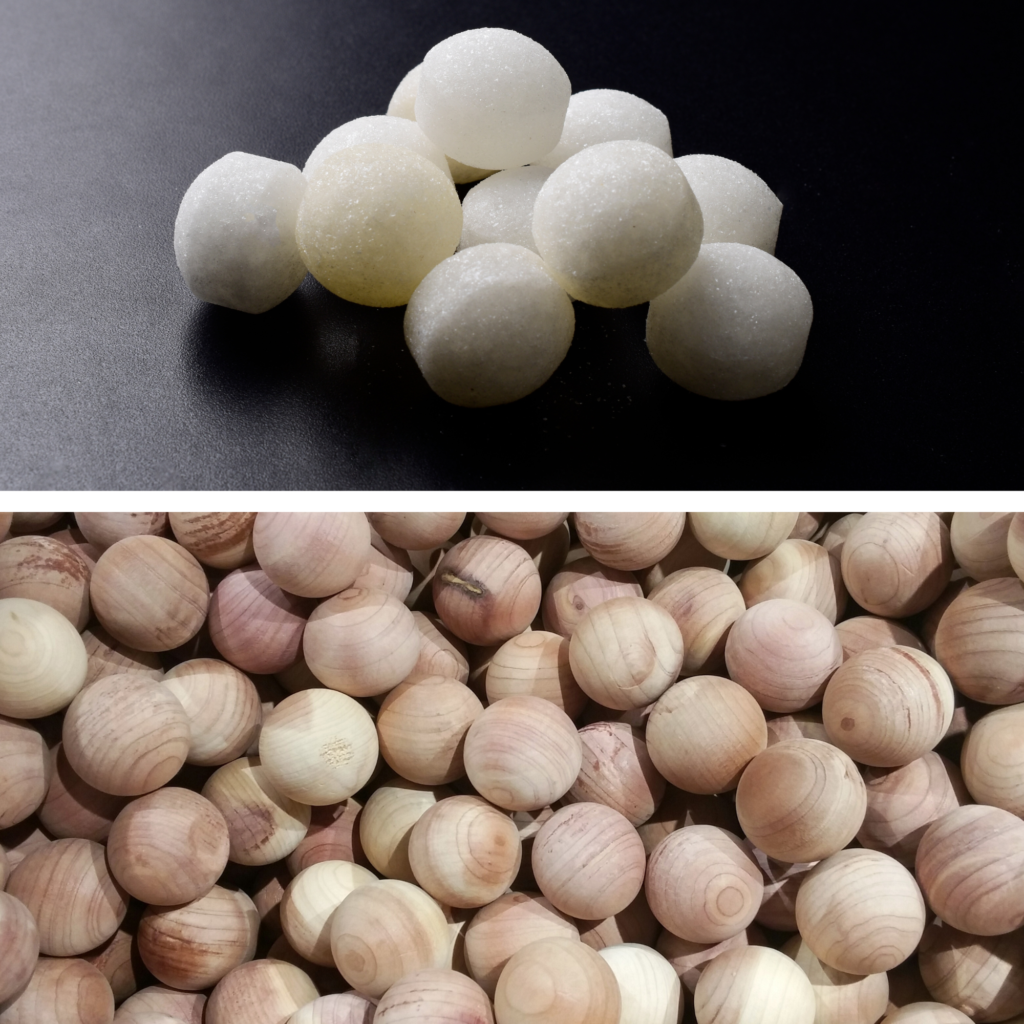
So why are moth balls and cedar blocks still sold? Because we have generations of lore telling us they are THE solution to the moth problem. Unfortunately, science and commercial opportunities often have competing interests. And moth balls do work, but not in the way most people use them.
So what do you do?
First, find out if you have clothing moths. There’s no need to treat a problem that doesn’t exist.
One way find out is to hang moth traps in areas where they are likely to hang out. Traps are pheromone attractors with sticky pads of glue that capture moths. Silly buggers are intoxicated by the smell and venture in. If you get moths in your traps, after you stop swearing, it’s time to do a thorough assessment and cleaning.
Another way to find out if you have moths is to carefully examine natural fiber textiles when you’re taking them out of storage. Take them outside into good light and look carefully for the holes, larvae carcasses, cocoons, webbing patches and tiny balls of poop (ew). Moth holes can be very small (tiny larvae, tiny mouth). When you’re checking your clothes or on a thrift trip, holding single layers of garments up to the light is the easiest way to spot them. This doesn’t work with coats and jackets that are lined, but you can see even the tiniest holes when light shines through.
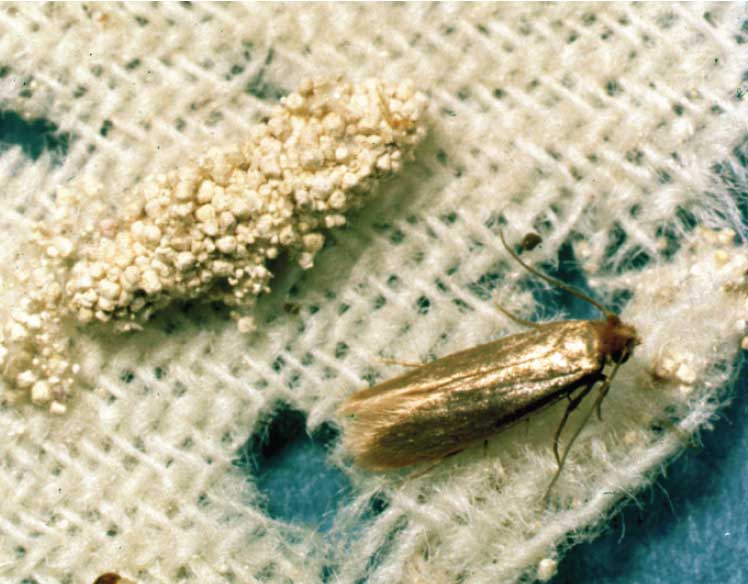
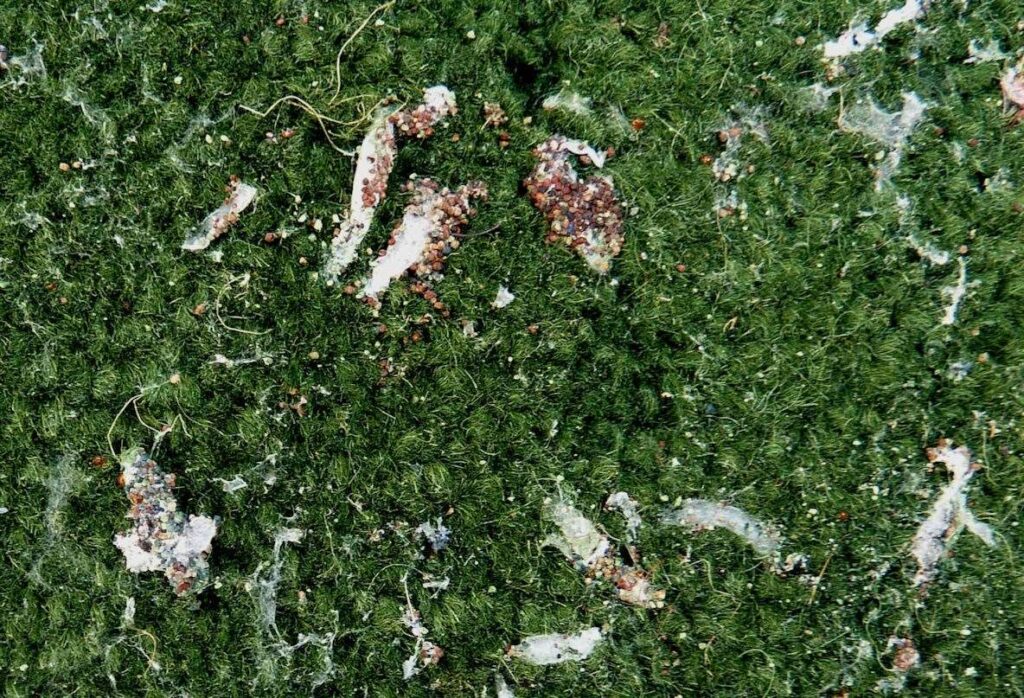
If you find damage, start with the vacuum on both clothing and decorative textiles. After vacuuming, dispose of the vacuum bag in a tightly sealed bag. Then seal the textile in a plastic bag and keep it outside or in the freezer until you can have it cleaned. Yarn with signs of moth should be disposed of. There’s no way to tell how deeply they have penetrated a skein.
Thoroughly clean or dispose of whatever the mothy items were stored in. If it’s a wooden chest, take it outside into the sunshine, vacuum and wash it. If it’s a basket or cloth bag, dispose of it. It’s not worth the risk of re-infesting your Nordic sweaters.
Freezing temperatures kill moth larvae. If you have a cold garage and can leave mothy items there for a few days, it’s always a good idea to do so before having the garment or carpet cleaned. Most rug cleaners will not accept rugs with active moths because they don’t want to infest other client’s rugs.
Preventing Moths
The best way to prevent moths from getting a hold on your closet is to properly clean and store out of season textiles in tightly sealed containers. Routinely vacuum rugs, tapestry and upholstery. Feel free to be overly cautious, better safe than holey. It is much, much easier to prevent moths than to get rid of them.
If you’re an antique or vintage lover, don’t bring moths into your house with a beautiful antique rug or vintage swing coat. The cost of cleaning prior to bringing anything that’s been in someone else’s house into your house will be well worth it. A seller might diligently remove signs of moths, but they might not get all the eggs. And don’t store things in a fantastic antique trunk from the flea market until it’s had a few days of sunlight and a thorough vacuuming or three.
By the same token, if you are sorting through your no longer needed clothing and you discover moths, either dispose of the clothes or have them cleaned before you donate or sell them. You don’t want to spread moths to a house that doesn’t have them.
A True Life Moth Horror Story as told by someone who saw it
Me. I saw it. I was on a team that was dispersing the contents of a house where the owner had stored generous quantities of fabric, yarn and clothing in the basement craft area, but had been unable to get down there for years. There was a wool carpet on the floor. Or what had been a carpet. The moths had eaten it down to the backing. We did not know it was not just matting until we moved boxes off areas and saw that the rug had originally had a pattern and nap.
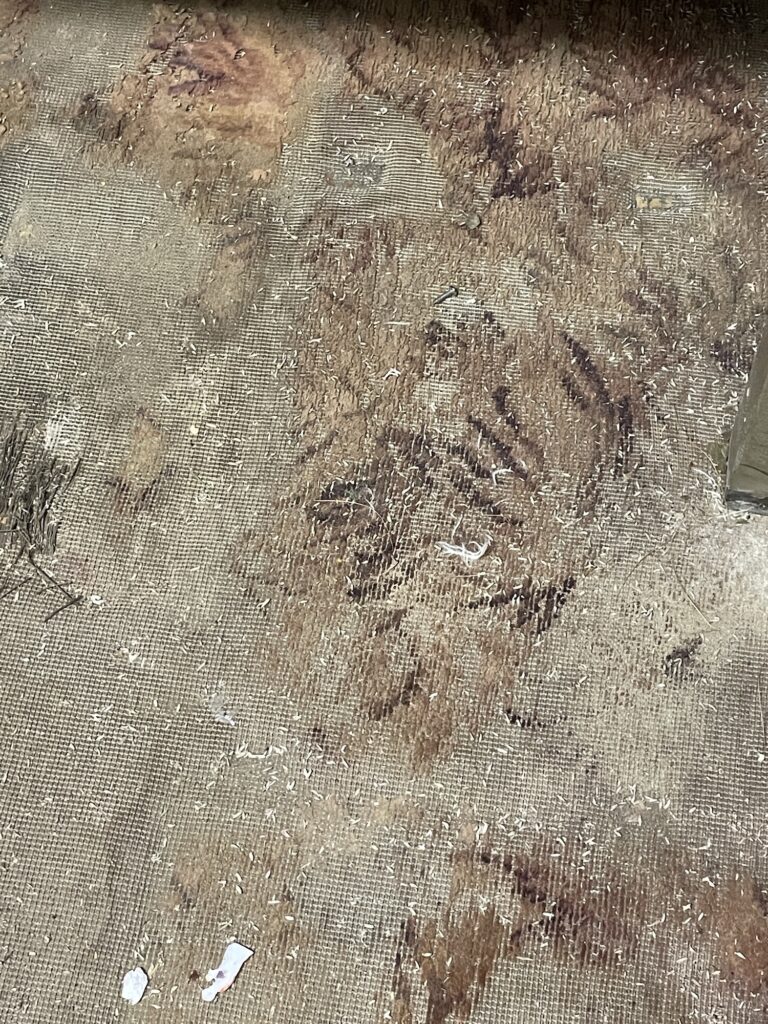
The moths had gotten into everything that was not tightly sealed. They even ate parts of vintage Christmas ornaments stored in boxes. Moths have no respect for tradition. The basement was emptied, cleaned and the new owner had pest remediation to make sure it would not be a problem for her going forward.
Clothing moths are not the worst thing that can happen to you, and if you find them in your things, rest assured, you are not alone. A favorite skirt or sweater with a few moth holes is not a total loss, it can be cleaned and mended. Dealing with moths thoroughly takes time, but it’s well worth the effort—particularly if you are transitioning to a new home. Moths definitely do not have a place on the list of things to bring with you.
You can find more details on moths, moth balls and moth prevention here:
Mothballs: Regulation, Proper Uses and Alternatives from the National Pesticide Information Center.
Clothing Moths, a Utah Fact Sheet from the Utah State University Extension Service.
Clothes Moths, University of Kentucky Department of Entomology.
Understanding Clothes Moth Infestations, English Heritage. (Interesting note: we can point the finger of blame at the Romans for spreading clothing moths to Europe as they built their empire.)